Rare books are as much artifacts as they are texts and there is no better proof of this than the ways in which early readers bound, annotated, and otherwise customized their books. Paper in particular was much scarcer in the early modern period than it is today, so fly-leaves and margins were prime spaces in which to jot down thoughts on the text. They were also a favorite place for children to practice penmanship or readers to make idle doodles. Some owners, like the anonymous one who recorded his yearly livestock (“hors”, “sheeps”, “cow”, “hogs”) expenses in his copy of John Brinsley’s 1627 Ludus Literarius, or, The Grammar Schoole [371 B7l1627 c.2], even used blank space for accounting.
Still other owners used their books to preserve genealogical information like births, marriages, and deaths. Usually this information was recorded in a family Bible that was passed down to children, grandchildren, and beyond, each subsequent generation recording their own important family dates. Between roughly 1750 and 1830, the Baker family of South Milford, Yorkshire wrote their important dates, however, in a calf-bound volume containing two works: Edward Brerewood’s Enquiries Touching the Diuersity of Languages, and Religions, through the Chiefe Parts of the World (1622) and A Remonstrance of the Most Gratious King Iames I. King of Great Britaine, France, and Ireland, Defender of the Faith, &c. (1629) [409 B75e1622].
We do not know who first owned this 17th-century volume, although several men left behind ownership markings: John Baker, William Baker, Benjamin Baker, William Shooter, and William Taylor. There were two Benjamin Bakers, a “Juner” and a senior. Benjamin Baker, Sr. fathered at least nine “sun[s]” and “doughter[s],” born between 1764 and 1781, and their births and early deaths make up many of the entries in the volume. Of the nine children, only three lived to adulthood. One was Benjamin Baker, Jr., “Born March 28th in 1766 Betwese the ouer of Ten and a Leven a Clock in the fornoon” (Brerewood 2D2v), who was followed two years later by his sister “Martha Baker Juner Born July 5th 1768 Betwesct the ouer of Siss and Seven in the fornoon” (Brerewood 2D2v). Both siblings married in 1792, Benjamin Baker to Sarah Darley[?] and Martha Baker to William Shooter.
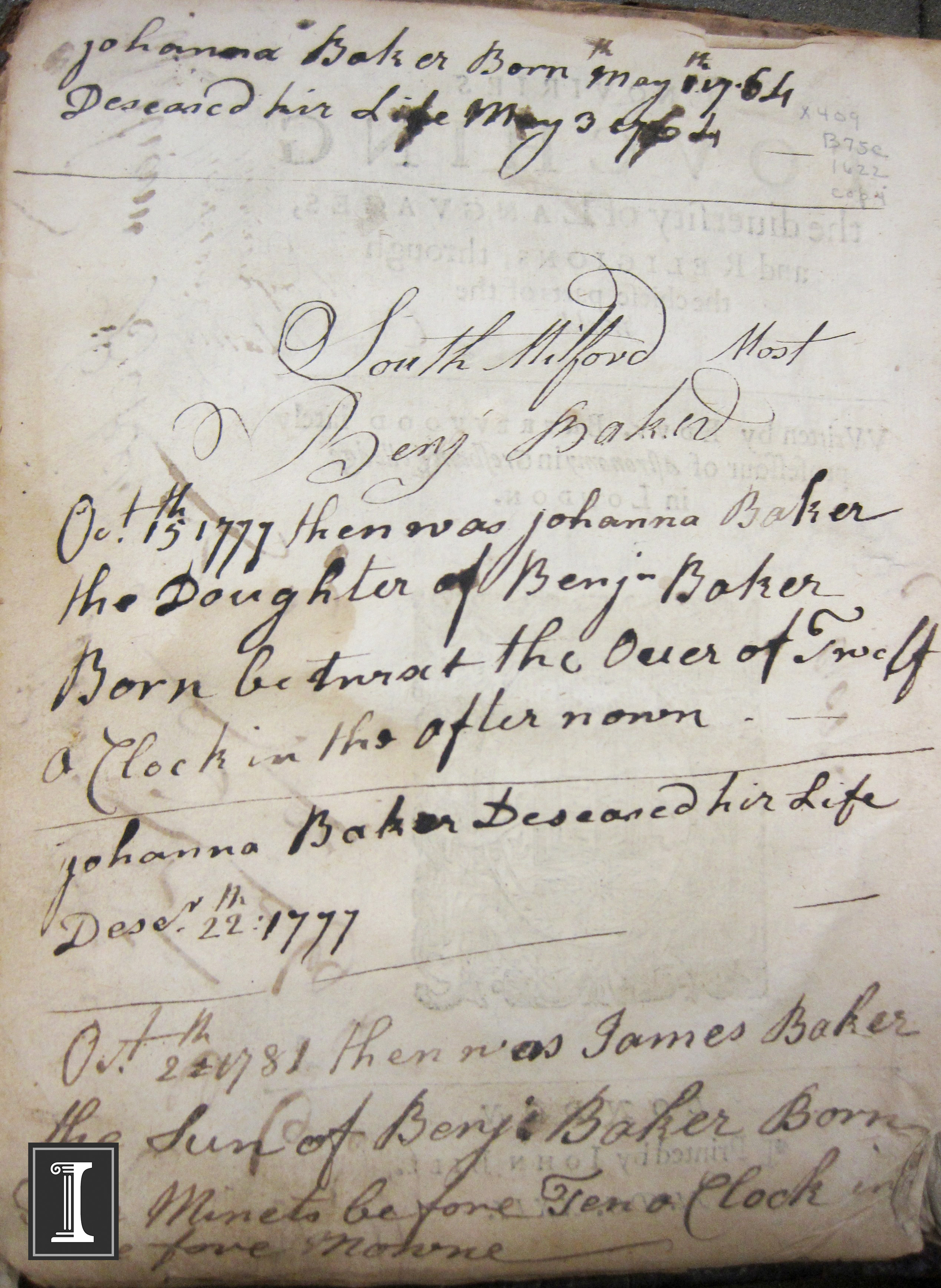
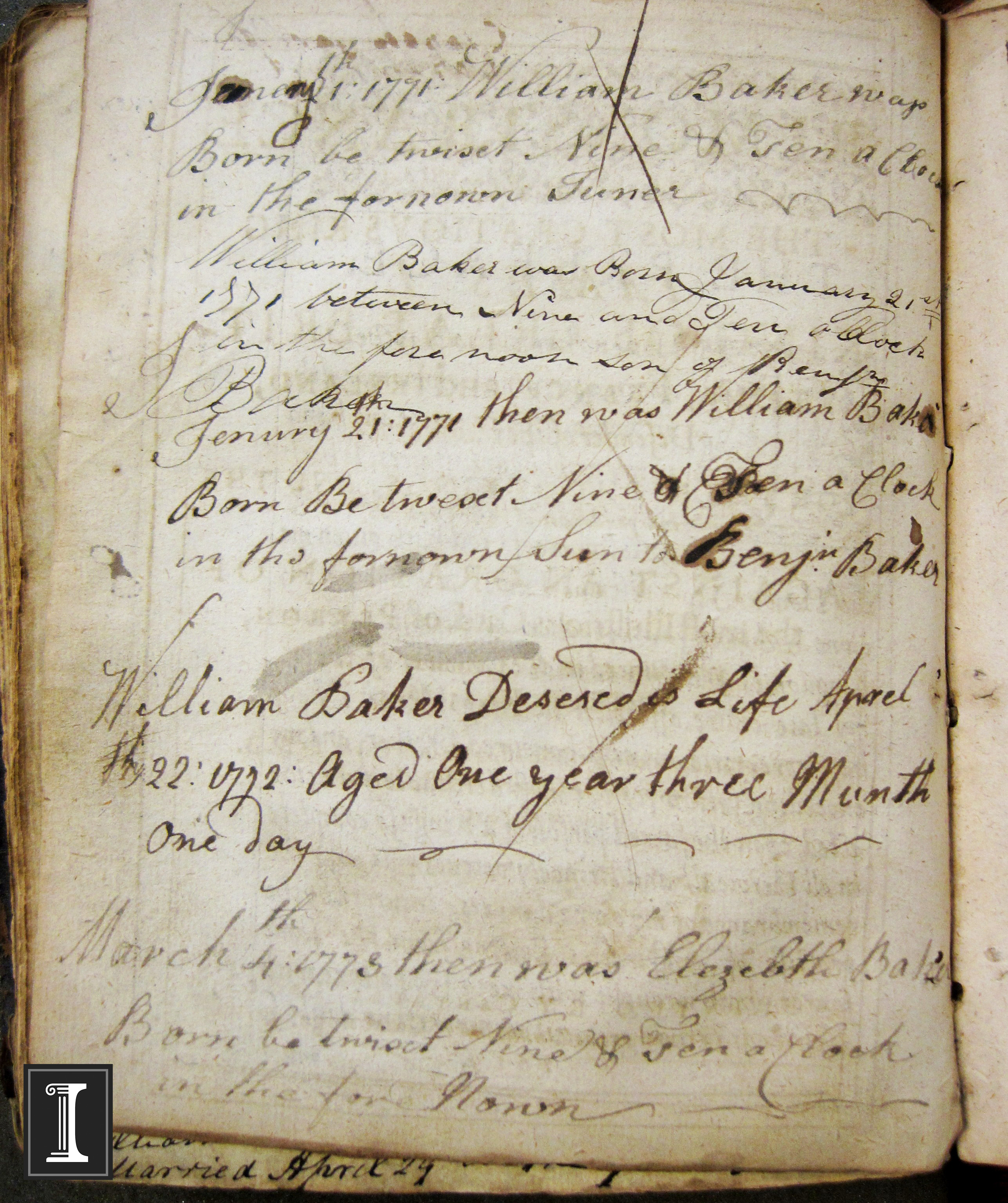
The identity of the people who recorded these of births, deaths, and marriages is unclear. It is tempting to think that Martha perhaps copied the Baker milestones from a family Bible, knowing she could not take it to her new home with Shooter and not wanting to lose the valuable family history within, but it is clear from the variance in ink colors that the milestones were recorded at different times, maybe by Martha’s mother or father. Also murky is how the Pickard / Picard and Mathers families–for they have their own share of entries in the volume–fit into the picture, although the common thread is the name Sarah.
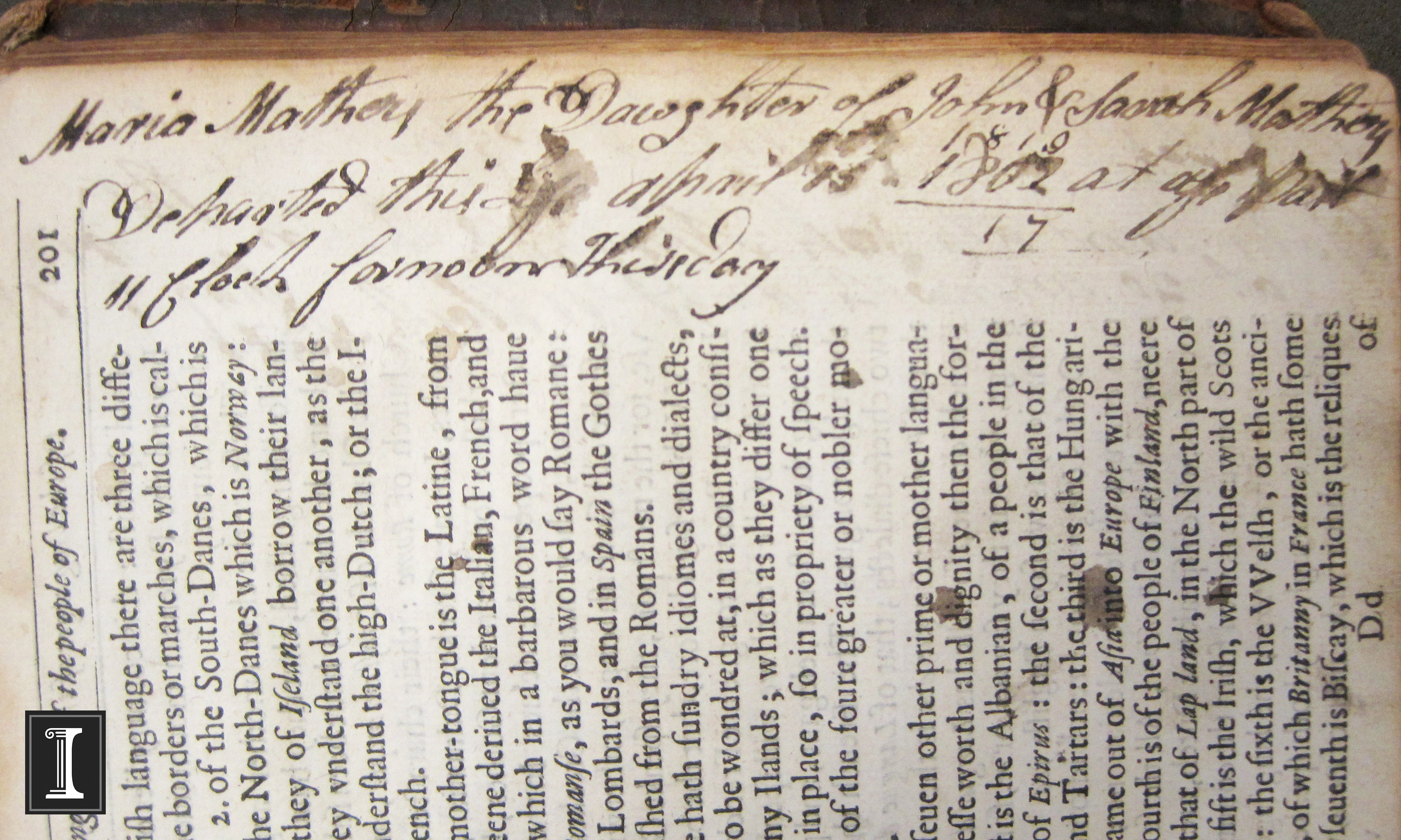
Annotated books, as this post demonstrates, can raise just as many questions as they answer. Do you have any family genealogies in books? SL
*1764, May 1 – 1764, May 3 / Johanna Baker
1766, Mar. 28 – / Benjamin Baker, Jr. [m. 1792, May 23, 1792, Dec. 22?]
1768, July 5- / Martha Baker, Jr. [m. 1792, April 29]
*1771, Jan 21 – 1772, April 22 / William Baker
*1773, Mar. 4 – 1791, May 30 / Elezebeth Baker
*1775, May 3 – 1791, “8” / Mary Baker
*1777, Oct. 15 – 1777, Dec. 22 / Johanna Baker
1779, Feb. 7 – / Sarah Baker
*1781, Oct. 21 – 1784, May 7 / James Baker
*deceased
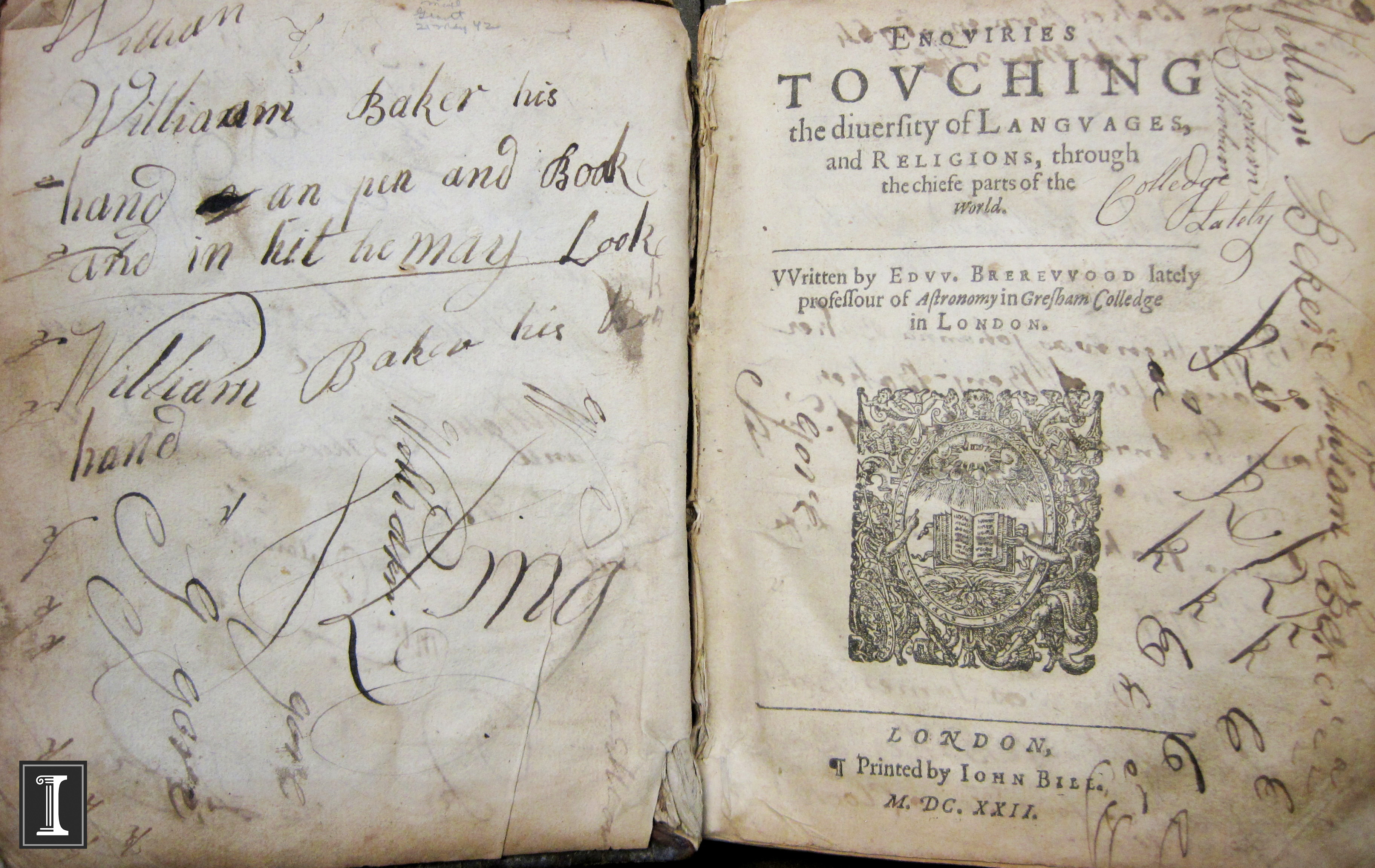
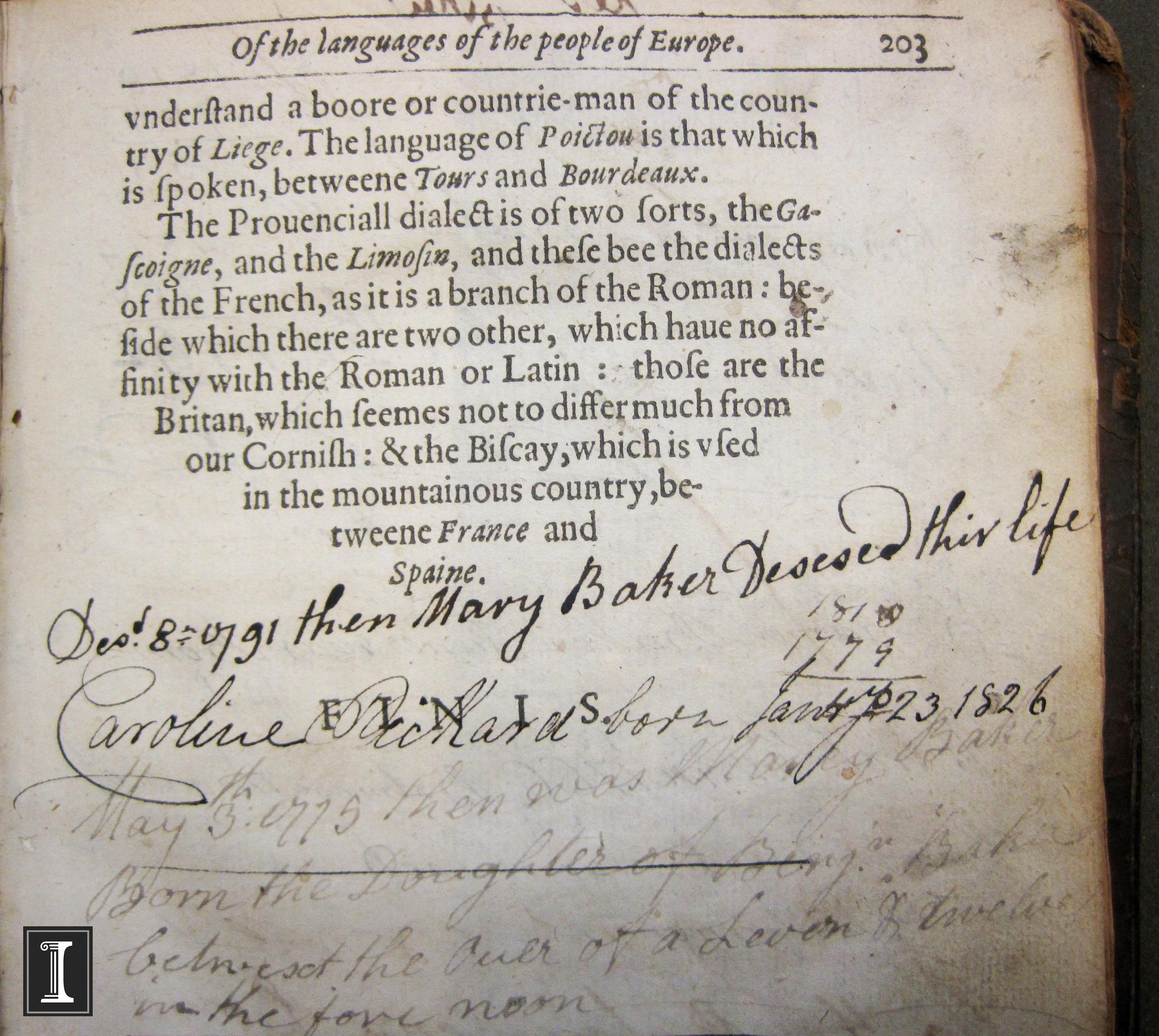
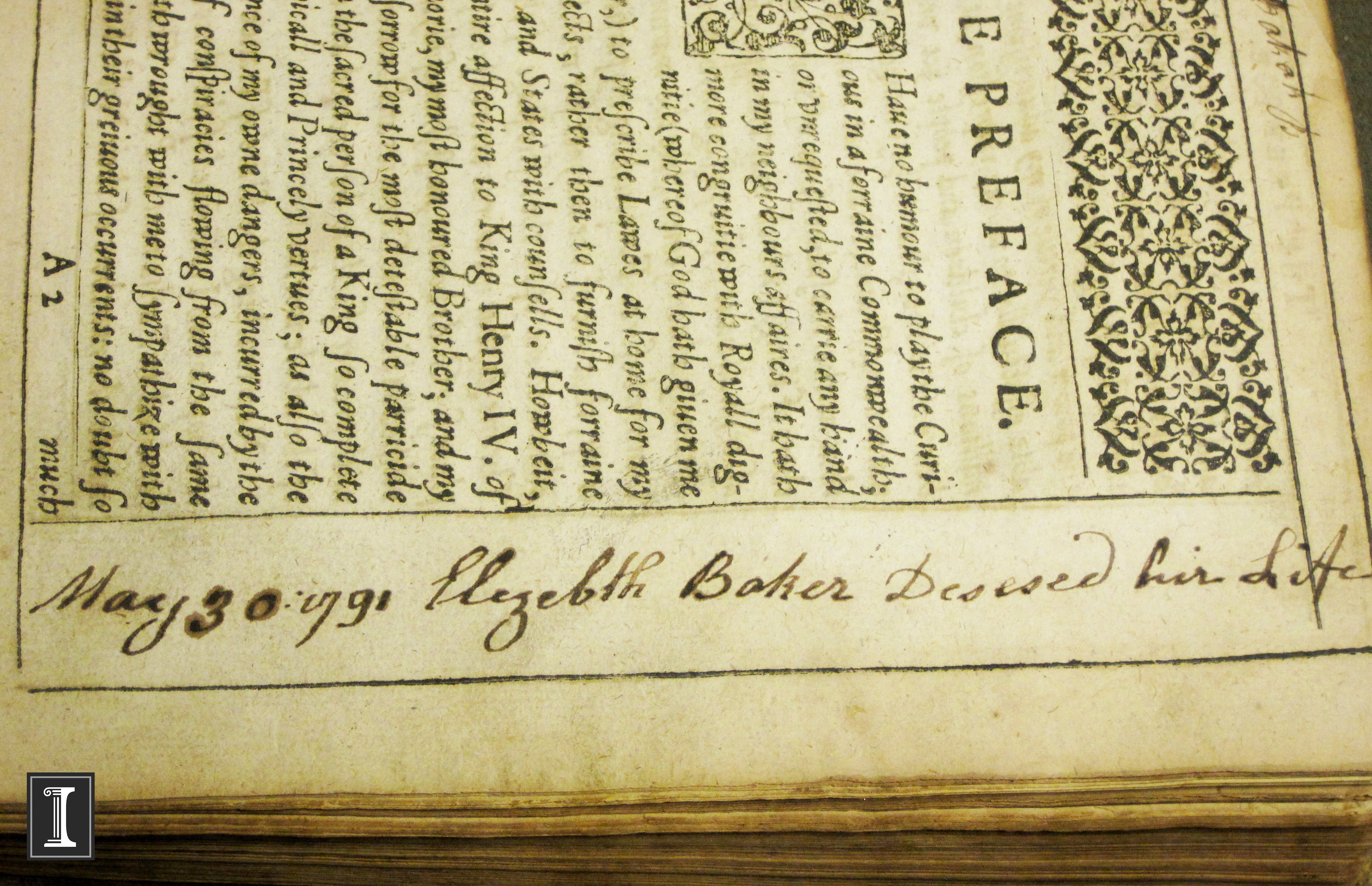
I love that in the Age of the Internet I can see a name in an old book and have a 50/50 chance of finding out who the person was. 🙂
This is a good resource too, although more common readers are not yet represented: http://www.cerl.org/resources/provenance/main